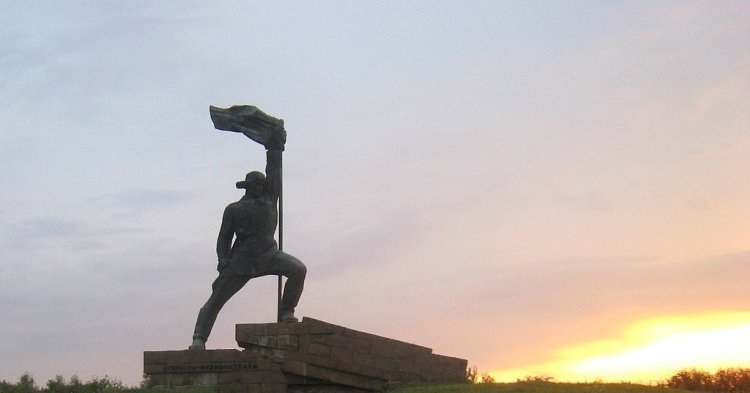In these days of war on the European continent, we should never forget the role that war had in the development of European integration, both in theory and in practice.
In 1941, WWII was happening alongside Hitler’s plans, and he decided to open the Eastern Front with what was called “Operation Barbarossa”, i.e. the invasion of the Soviet Union. That finally proved to be decisive for the outcome of the conflict with the defeat of Germany.
Nonetheless, at the beginning of 1941, when everything still seemed to go in Hitler’s favour, two men who were confined on an island in the Tyrrhenian Sea, alongside hundreds of other people opposing fascism in Italy, already foresaw the end of the war and proposed a way forward.
Those two men were Altiero Spinelli and Ernesto Rossi, and they wrote their ideas in a pamphlet that became later famous as Ventotene Manifesto, from the name of the island they were confined to. The Manifesto was edited by Eugenio Colorni who clandestinely disseminated it in Italy alongside Ursula Hirschmann and Ada Rossi, and its main inspirations came from Immanuel Kant’s Perpetual Peace and Alexander Hamilton’s federalist theory.
For anyone who is interested in European federalism, these are nothing new: the Ventotene Manifesto has always been regarded as one of the main texts for its development; but it’s extremely important to underline its pacifist drive: one of the reasons why a federation for Europe was proposed, was to achieve peace - and then it is not surprising that such an idea was born during a World War.
Kant, in his 1795 book Perpetual Peace: A Philosophical Sketch, stated, among other concepts, that the only way to achieve peace is to nullify all possible causes of war - i.e. totally abolishing armies in the long term. According to the German philosopher, without enacting this and other points, possible only by a federation of free States, the absence of war should be interpreted as truce rather than as peace. [1]
Clearly, Spinelli and Rossi were not the only ones proposing a federation of European States based on Kant’s ideas. Among many others, only two years before them, Clarence Streit, New York Times correspondent at the League of Nations, gave his perspective. Worried by the lack of reaction from the biggest democracies against the rise of Fascism and Nazism, he proposed in his book Union Now a federation of 15 States, going beyond Europe and including also the United States, Canada, Australia, New Zealand and South Africa. [2]
At the end of WWII, Streit’s proposals were already forgotten while Spinelli started his fight for a European federation, which would have seen him also inside the European Parliament as an independently elected member until his death in 1986.
The so called “Schuman Declaration” that established the European Coal and Steel Community (ECSC) provided a good start for the political integration of the European States, providing a clear federalist perspective; [3] but by the time Spinelli died, the federalist impulse was already almost completely exhausted.
Another big opportunity that was missed was the project of establishing a European Defense Community (ECD, also known as Treaty of Paris) in 1952, as a response to NATO’s (founded in 1949) proposal to let West Germany re-arm and access NATO. ECD foresaw that the 6 founding ECSC countries would have shared a common defense force. The proposal failed as France, the initial proposer, finally opposed it. West Germany accessed NATO in 1955 and this led to the establishment of the Warsaw Pact as an answer. Ernesto Rossi abandoned the federalist militancy upon the disappointment of the ECD failure.
The Western European States, members of the ECSC and then of the European Atomic Energy Community (EAEC) and the European Economic Community (EEC), tricked by the truce they were experiencing within their borders, mislead that for peace and put aside the political and strategic integration, focusing on the economic one. Stalin’s death in 1953 let many think that a distensive period was in sight.
WWII ended with Europe as a battlefield for the USA and the USSR, who de facto portioned it among themselves. What happened next - Cold War - was not too different: the USA and USSR went on with their shows of force.
Europe, in the meantime, was divided in blocs and also inside those blocs the integration was limited. The majority of the Western European countries were part of NATO and then allowed the USA to place military outposts within their borders. The Eastern ones could not do anything else other than to wait and exploit any possible breach in the USSR.
This happened at the end of the 1980s: the USSR collapsed and the countries that formed part of the Warsaw Pact were freed. The Western European countries were so distracted by that, that they could not avoid a civil war in Yugoslavia - but they were able to finalize the Maastricht Treaty, which formally established the European Union and paved the path to a common currency, but still without a government or single economic policies.
In 2004, the majority of the Eastern European countries that were part of the Warsaw Pact or even of the USSR itself joined the EU. Some of them even adopted the Euro quickly. Almost every one of them joined NATO: the Russian Federation, the main remainder of the Soviet Union, was weaker and apparently less belligerent, but was still close to their borders - if not even at the borders - and NATO, rather than the EU, was still seen as its primary counterparty.
Nevertheless, the former Warsaw Pact countries that joined the EU experienced steady economic growth and a sensible overall improvement of the quality of life despite the economic crisis that hit them after 2008, but which hit the Western part harder since the EU, with its lack of integration, did not have the means to solve it. [4]
However, probably still haunted by the Soviet specter that mortified their independence for 45 years or even more, those very same Member States were not at all keen on finally working towards the necessary political integration of the EU, and finally, of the whole of Europe - because history showed that Europe, in its entirety, is a community.
The war in Syria and subsequent migration crisis from 2015 on, even the COVID pandemic, have not been strong enough drivers to push European governments to give executive power to a government of the EU, with single policies in the fields of economy, climate, energy, foreign policy and defense.
So we must go back to the beginning of this story, and of this article: war. The war in Ukraine made Europe once again, after WWII and the Cold War, a battlefield for the USA and Russia. This is made evident by the Russian Government frequently mentioning NATO policies as an excuse to be disappointed and often referring to the US Government and its Presidency as main interlocutors, while well, as this war is being fought on the European continent at the direct borders with the EU, the main interlocutor should be the EU.
But the EU simply does not exist as an interlocutor at these levels, since it lacks single policies for defense and foreign affairs (and also energy has proven to be a key talking point in this conflict). Head of States have tried to engage with Putin bilaterally, but they have obviously failed.
Again, back to the starting point: do we want to live in truce or in peace in Europe? In the last 77 years we have (mostly) lived in truce. But we - wrongly - thought it was peace. To avoid the same mistake, we now must know what to do: build a federation of free European States, able to keep peace rather than truce within its borders, that can act as a role model on the longer path of continental, and finally global, peace.


Follow the comments: |
|
